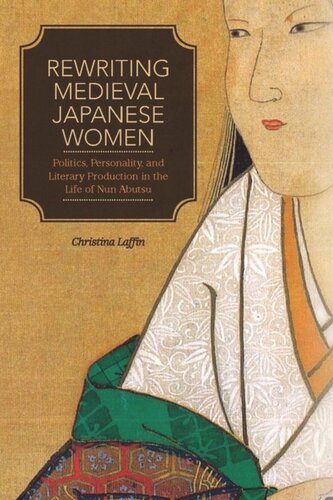

Most ebook files are in PDF format, so you can easily read them using various software such as Foxit Reader or directly on the Google Chrome browser.
Some ebook files are released by publishers in other formats such as .awz, .mobi, .epub, .fb2, etc. You may need to install specific software to read these formats on mobile/PC, such as Calibre.
Please read the tutorial at this link: https://ebookbell.com/faq
We offer FREE conversion to the popular formats you request; however, this may take some time. Therefore, right after payment, please email us, and we will try to provide the service as quickly as possible.
For some exceptional file formats or broken links (if any), please refrain from opening any disputes. Instead, email us first, and we will try to assist within a maximum of 6 hours.
EbookBell Team

4.3
68 reviewsRewriting Medieval Japanese Women explores the world of thirteenth-century Japan through the life of a prolific noblewoman known as Nun Abutsu (1225–1283). Abutsu crossed gender and genre barriers by writing the first career guide for Japanese noblewomen, the first female-authored poetry treatise, and the first poetic travelogue by a woman—all despite the increasingly limited social mobility for women during the Kamakura era (1185–1336). Capitalizing on her literary talent and political prowess, Abutsu rose from middling origins and single-motherhood to a prestigious marriage and membership in an esteemed literary lineage.
Abutsu’s life is well documented in her own letters, diaries, and commentaries, as well as in critiques written by rivals, records of poetry events, and legal documents. Drawing on these and other literary and historiographical sources, including The Tale of Genji, author Christina Laffin demonstrates how medieval women responded to institutional changes that transformed their lives as court attendants, wives, and nuns. Despite increased professionalization of the arts, competition over sources of patronage, and rivaling claims to literary expertise, Abutsu proved her poetic capabilities through her work and often used patriarchal ideals of femininity to lay claim to political and literary authority.
Rewriting Medieval Japanese Women effectively challenges notions that literary salons in Japan were a phenomenon limited to the Heian period (794–1185) and that literary writing and scholarship were the domain of men during the Kamakura era. Its analysis of literary works within the context of women’s history makes clear the important role that medieval women and their cultural contributions continued to play in Japanese history.